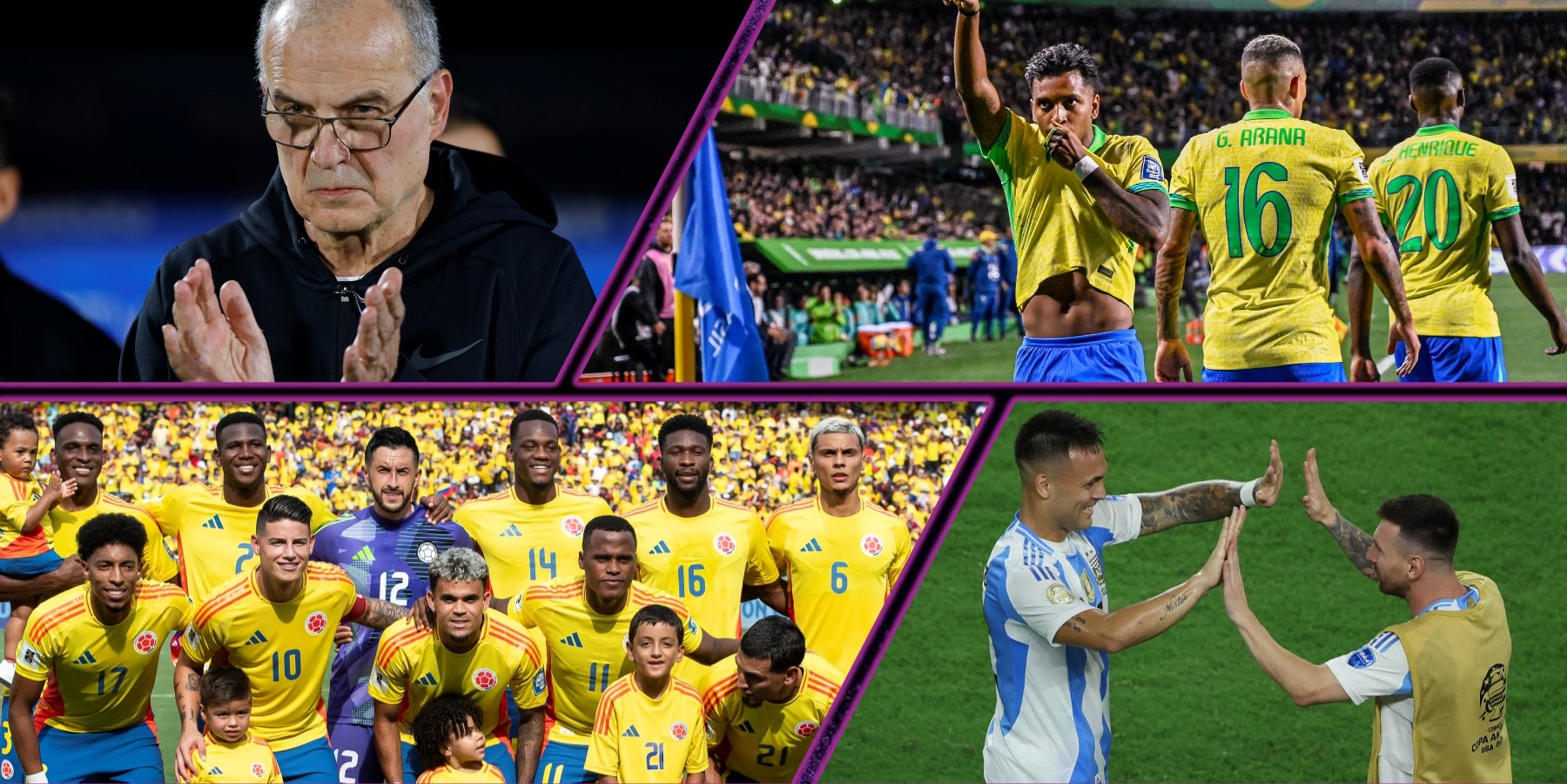The South American World Cup Qualifiers may not be the most exciting in terms of format (10 teams playing two rounds, six qualify directly, and one goes to the new intercontinental play-off), but their difficulty lies in the parity of the matchups.
In CONMEBOL, there’s no equivalent of San Marino, Liechtenstein or Gibraltar that guarantees easy points. Here, even the world champions can face tough opposition, and no team is ever out of contention.
With four matchdays left until the end of the year, only Argentina and Colombia seem to be on a clear path to the 2026 World Cup, leaving everyone else in suspense.
Bolivia and Paraguay are hopeful of staging comebacks, while Brazil see their qualification hopes under threat more than ever before. Venezuela are seriously pushing for their first-ever World Cup qualification, Ecuador aim to become a regular in the final stages and Uruguay hope internal issues won’t complicate things.
Elsewhere, Chile are looking to regain their footing as one of the top South American nations after missing out on Qatar, and Peru seek to recapture the strength they showed in the last two qualifying cycles.
Argentina: Between Success and Future Promise
Despite falling in their last match against Colombia in Barranquilla, Argentina comfortably lead the South American qualification table (W6 D0 L2) and should have no trouble securing a spot in the next World Cup.
The challenge for La Albiceleste is to maintain the consistency and good form they’ve been showcasing since the 2021 Copa América, which is no small feat, as many fans consider this to be the best Argentine team of all time.
Their dynamic possession play, which avoids the kind of frustrating over-possession seen with Spain in 2018, is a hallmark of Lionel Scaloni’s team. When they find their rhythm, their matches become true exhibitions of team play, pressing, and efficiency.
Argentina not only top the standings but also boast the highest possession rate (63.3%), the lowest PPDA (9.3), the most goals scored after high turnovers (4), and rank second in sequences of 10 or more passes (136, two behind Brazil).
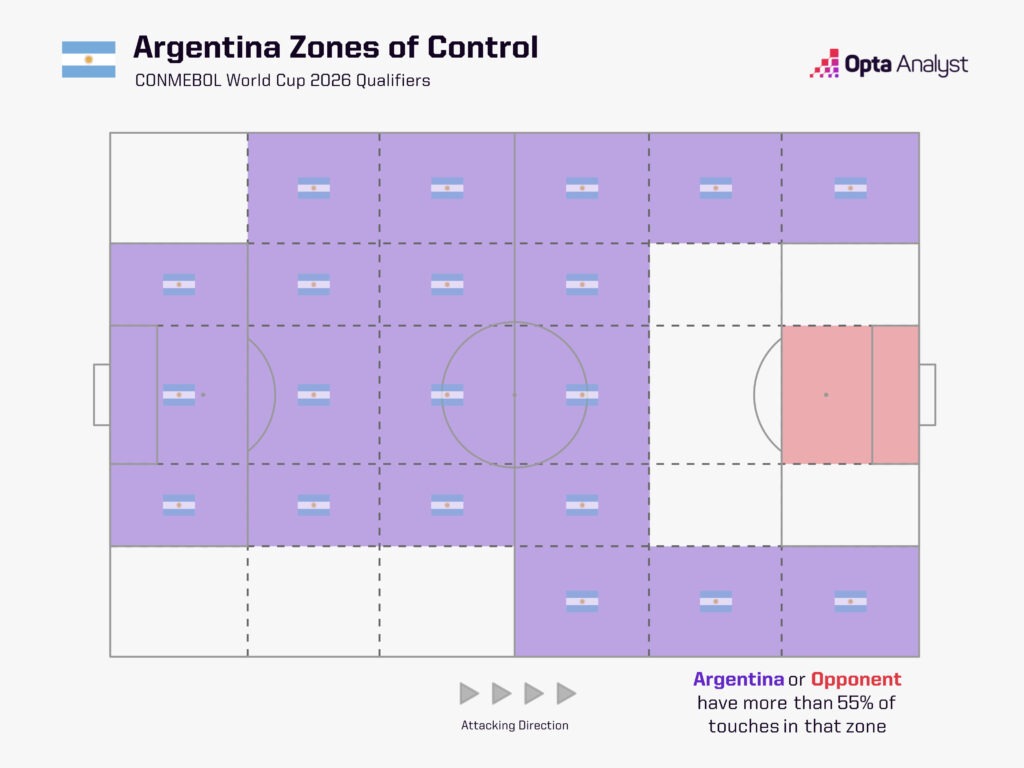
Across this double matchday of qualifiers, Argentina will have to deal with some significant absences (goalkeeper Emiliano Martínez is suspended and Paulo Dybala and Nico González are both injured), the return of Messi after the Copa América and a focus on the future.
The squad includes several players that Argentina fans have dubbed “Europibes” – very young talents who have played few (if any) matches in the Argentine league but already have European experience. Youngsters like Facundo Buonanotte (Brighton), Nico Paz (Como), and Valentín Carboni (Marseille) are beginning to emerge as the next generation to follow the World Cup-winning core.
Bolivia’s High-Altitude Gamble: Villegas Sparks a World Cup Revival
Bolivia have competed in three World Cups, but only one since CONMEBOL qualifiers have included all 10 teams (1994). In recent years, La Verde have been regularly eliminated in qualification, despite the challenges posed by playing at the high altitude of La Paz, a venue that no longer carries the invincibility it once had.
Before the September qualifiers, Bolivia looked like strong candidates to miss the World Cup yet again, but the arrival of Óscar Villegas has changed everything.
His first bold decision was to move Bolivia’s home matches from the historic Estadio Hernando Siles (3,650 meters above sea level) to the Estadio Municipal de El Alto, situated even higher at 4,090 meters. This stadium, home to Always Ready – the team Villegas once coached – represented a risky gamble, but one that paid off immediately. Bolivia thrashed Venezuela 4-0 (having lost 3-1 at home to them in the previous qualifying campaign), displaying superiority in all facets of the game.
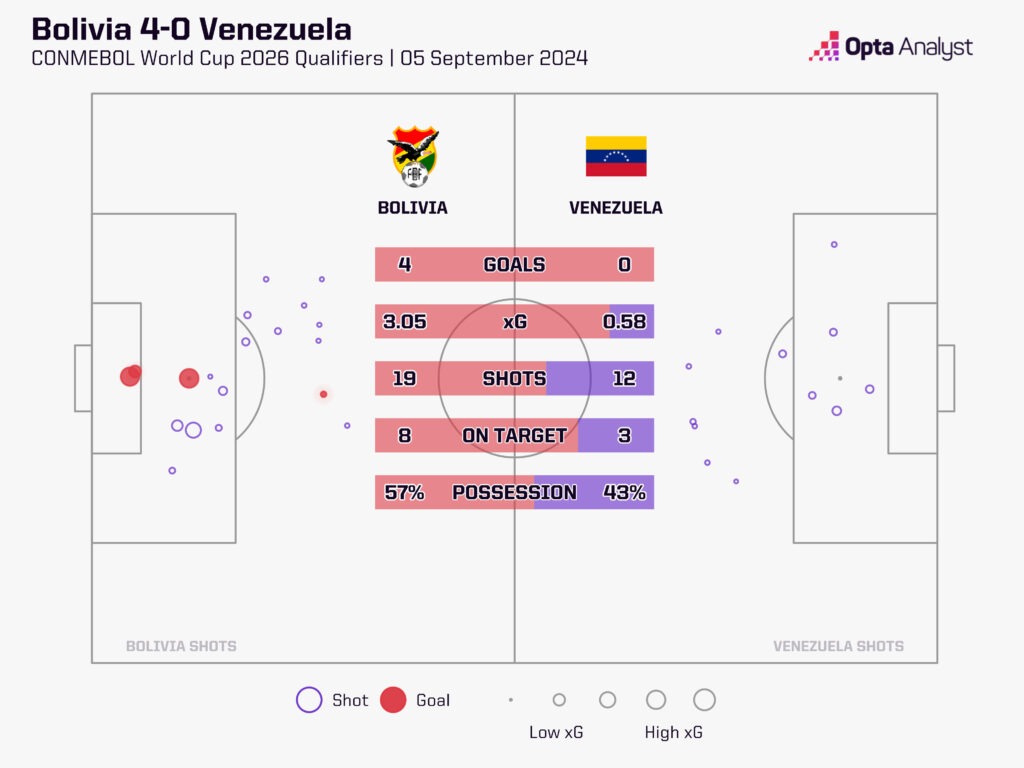
The biggest shock came in the following match when Bolivia defeated Chile 2-1, securing their first away victory in World Cup qualification in 31 years – a run spanning 67 matches. Their last away win came back on 18 July 1993, also against Venezuela, with a resounding 7-1 victory on their way to the 1994 World Cup in the United States, one of the hosts of the next tournament.
Could history repeat itself? With Villegas at the helm and a young, determined squad, Bolivia are ready to fight for their place on the world stage.
End of an Era? Brazil’s Worst Qualifying Campaign Sparks Change and New Talent
With 10 points won across eight matches (W3 D1 L4), Brazil are currently having their worst World Cup qualification campaign ever based on points per match (1.25).
Brazil have lost four of their last five World Cup qualifiers (W1), as many losses as they had in their previous 63 qualifiers (W41 D18 L4). This poor run includes their first ever loss at home in a World Cup qualifier, losing 1-0 versus rivals Argentina in the Maracanã stadium last November.
Following defeats in more than half of their internationals in 2023 (W3 D1 L5) – something Brazil hadn’t experienced in a calendar year since 1940 (W1 D2 L4), the CBF decided to make a managerial change. This fresh start for 2024, with the appointment of Dorival Júnior, means that they are already on their third coach since the end of the 2022 World Cup (after Ramon Menezes and Fernando Diniz)
Despite missing star player Neymar throughout this year, Brazil have lost only once under the new head coach (W4 D5 L1). The Al-Hilal star has been directly involved in 35 goals in Brazil’s World Cup qualifiers across his career (16 goals, 19 assists), which is 15 more than any other player in South America since his debut in 2015.
Without Neymar, Brazil’s expectations have fallen on the shoulders of Vinícius Júnior. Unfortunately for them, the Real Madrid star has been ruled out with injury for these two qualifiers in October, but they do still have Rodrygo and Endrick, who have both scored more often than Vinícius for Brazil in 2024 (both three goals).
Real Madrid’s new wonderkid Endrick represents a glimpse of hope to the national side, being the fourth-youngest player to ever play for Brazil. The new generation also has Chelsea’s future star Estevão, who became the fifth-youngest on this list when debuting against Ecuador in September.
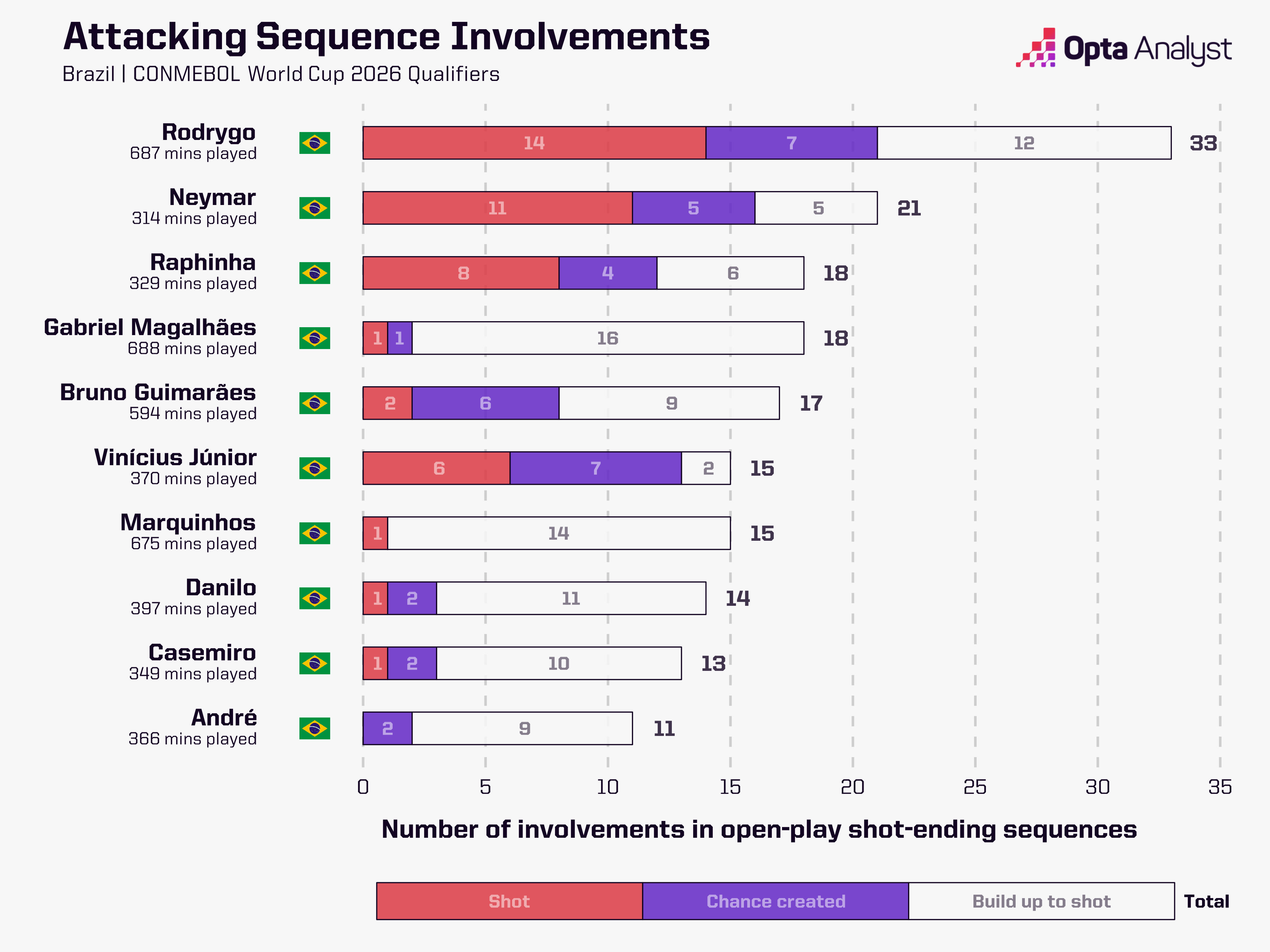
Chile’s Road to Redemption: Gareca’s Challenge in Rebuilding La Roja
It was less than 10 years ago that Chile played out their biggest moments in their history. Back-to-back Copa América titles were secured in penalty shootouts against Argentina in 2015 and 2016 – their first and second such titles.
Those Copa América successes came following consecutive appearances at the World Cup for the first time ever, with Chile progressing from the group stage in both 2010 and 2014. The Copa América Centenario title in 2016 was the swan song for that generation, which contained world-class players such as Claudio Bravo, Alexis Sánchez and Arturo Vidal.
Chile failed to qualify for the next two World Cups in Russia and Qatar, and judging by the current state of the team, they won’t be appearing in 2026 as well.
Chile finished the Copa América last summer without scoring a single goal, something they’d only done once before, in the second edition of the tournament they played in 1917. They have picked up just five points from their first eight qualifiers in this campaign (W1 D2 L5), making it their worst start under the current format, first played in 1998.
Chile’s problems go from defence to attack. They’ve saved just 64% of their opponents’ shots on target in these qualifiers, conceding 12 goals from 33 faced. Going forward, they have converted less than 5% of their own shots (4.4%), scoring just four of their 90 attempts at goal – only Peru (3.8%) and Paraguay (2.2%) have done worse.
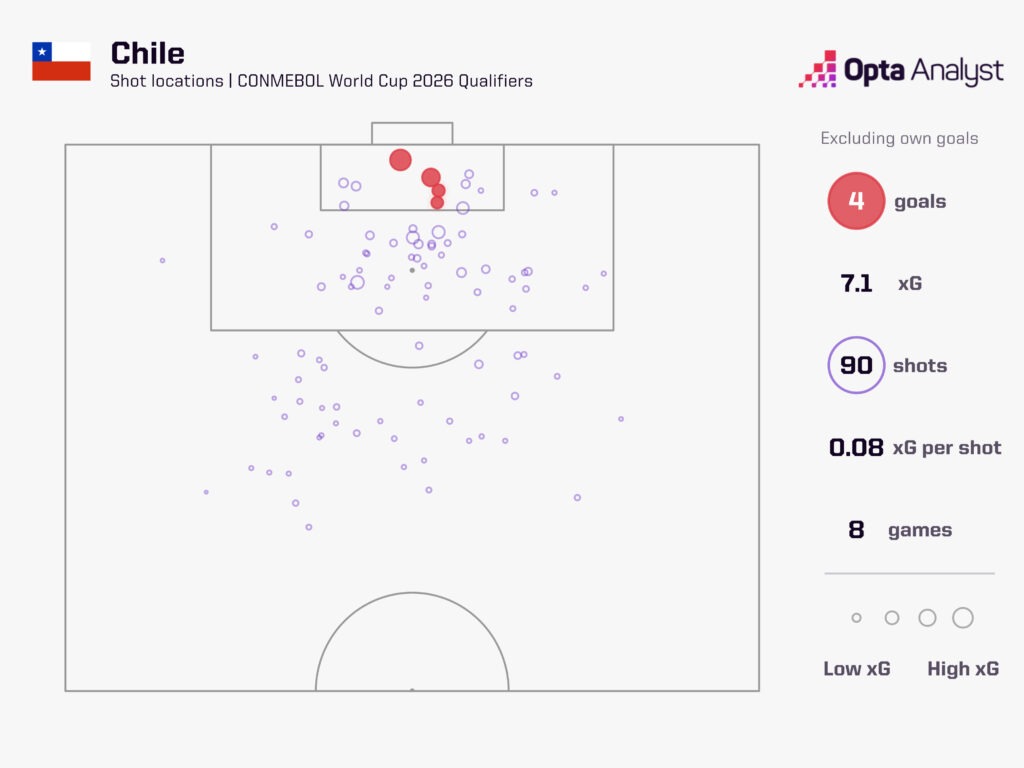
If Chile are to stand any chance of qualification, a lot of improvements need to be made, and they must begin in these two upcoming matches against Brazil and Colombia. Not an easy task.
Néstor Lorenzo’s Gamble Pays Off: Colombia Eye 2026 World Cup Glory
The appointment of Néstor Lorenzo as head coach of the Colombian national team was not without controversy. Despite his extensive career working alongside José Pékerman, the Argentine had little experience as a head coach. So far, however, the choice has proven to be a resounding success.
The former Swindon Town and Boca Juniors player (not two clubs you see together every day) has now overseen 31 matches, securing 23 wins, seven draws, and only one loss – a Copa América final defeat in extra time against world champions Argentina.
Under Lorenzo, Colombia have displayed a solidity and personality that has allowed them to win matches they had traditionally struggled with, including victories over Spain, Germany, Brazil and even Argentina in the last round of qualifiers.
The key to their success seems to be the resurgence of James Rodríguez. When Lorenzo took over, the former Real Madrid and Bayern Munich star was drifting through Brazilian football, and no one expected the level he has since provided upon his return to the national team.
Across 12 matches between Copa América and World Cup qualifiers, James has tallied three goals and nine assists. He has become the perfect complement to Premier League forwards, Luis Díaz and Jhon Durán, who are both flourishing at club level this season.
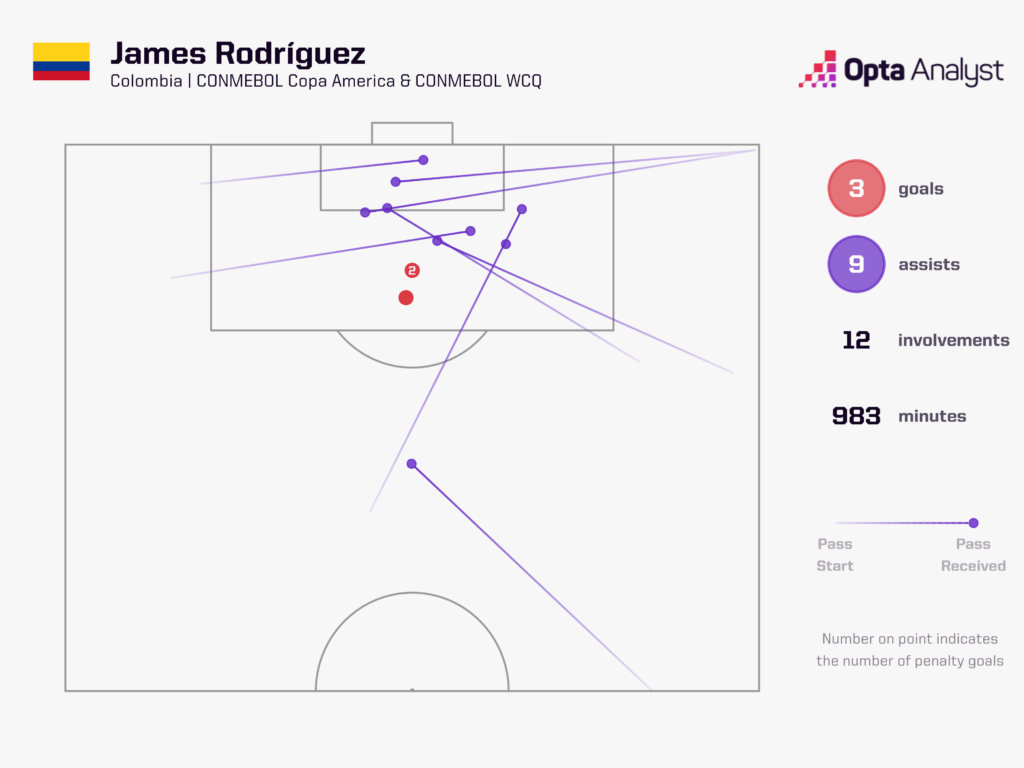
If Lorenzo can solidify the balance between the experience of James and the youthful talent of Durán, this Colombian team possess the pedigree to take the next step and emerge as serious contenders to make it far at the 2026 World Cup.
Ecuador’s Strength in Simplicity: Can They Secure a Spot in 2026?
After eight games, Ecuador sit fourth on the table. With a record of four wins, two draws and two defeats, they are positioned as the best of the rest, just four points behind the three leading teams Uruguay, Colombia, and Argentina. It would have been even better had they not been deducted three points for an administrative error in the previous World Cup qualification cycle.
Despite a feeling among the national media and fans alike that they are not performing to the level that their ability should allow them to, they are just one place lower in the table than they were at this stage of qualification for the 2022 finals.
Following a similar pattern to the Gustavo Alfaro-led side that qualified for Qatar 2022, Ecuador are a very direct team that wants to exploit the speed of its attackers. Ecuador haven’t scored many goals (just six in eight games), while their total of 80 shots in the third-lowest in qualification. However, they have the third-highest tally of direct attacks – the number of open-play sequences that start just inside their own half and have at least 50% of movement towards the opposition goal, ending in a shot or a touch in the opposition box – with speed of attack an Ecuadorian specialty.
Defensively, Ecuador don’t give a lot away. Only Paraguay (3) have conceded fewer goals than them (4), while Brazil (71) and Argentina (47) are the only teams to have allowed opponents fewer shots than them (73). They have conceded the lowest non-penalty expected goals (xG) total across the qualifiers (4.33), while the average xG of opponents’ non-pen shots is also the lowest (0.06).
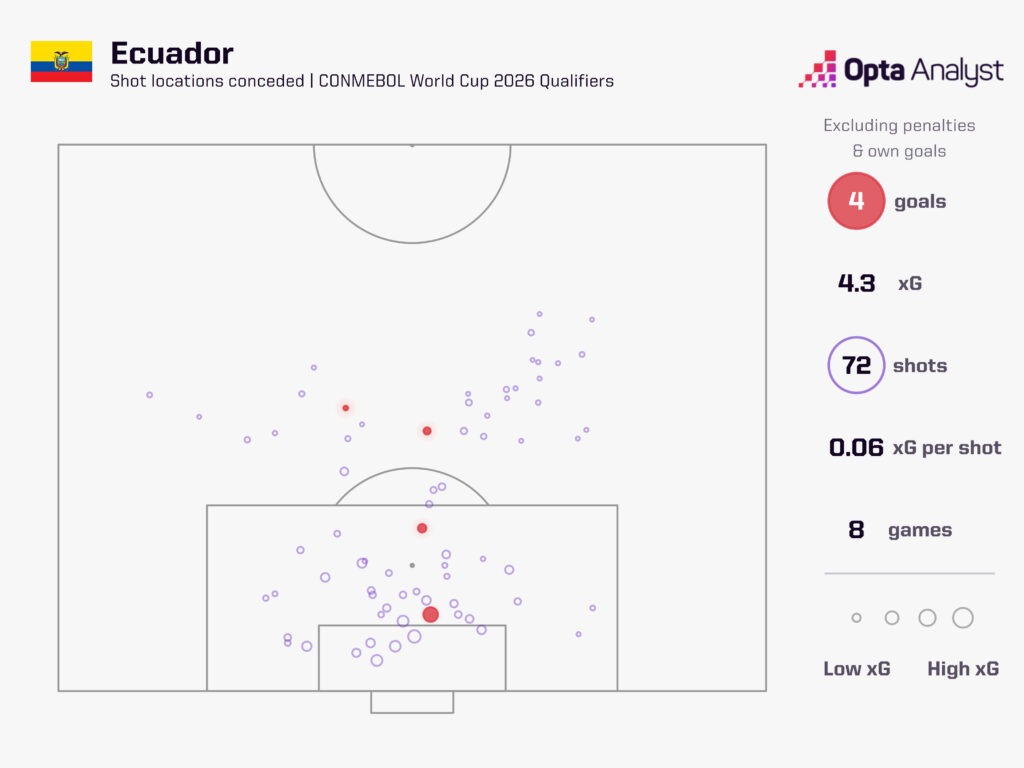
Ecuador has taken the structure defined by the previous qualifying tournament and decided to follow the same path of efficiency without being flashy. It could prove to be the key in securing consecutive appearances at the World Cup for the first time in their history.
Paraguay’s Path to the World Cup: Defensive Stability, Offensive Challenge
After a challenging start to their in the World Cup qualification campaign, with only one win and one goal scored after eight matches, Paraguay shocked everyone. Their Matchday 8 win at home to Brazil (1-0) has given them something to build on ahead of games versus Ecuador and Venezuela.
That one-goal victory followed the pattern of Paraguay’s qualification campaign so far, with very little goal action. There have been just five goals scored overall in the eight qualifiers that Paraguay have played so far in this campaign, with every game ending 0-0 or 1-0. The 0.6 goal-per-game average in their matches is unsurprisingly the lowest of all teams.
However, these upcoming games, and particularly their first against Ecuador, could be a turning point for Paraguay in their quest to qualify for the 2026 tournament. If they can maintain their solid defensive work, having faced only 20 shots on target, the second-fewest behind Argentina (18), there’s reason to believe they can continue to apply pressure on those above them in the current standings.
They will undoubtedly have to improve their attacking output as well, however. They may have only scored twice, but their 93 attempts at goal are below only Colombia (103) and Argentina (102) in this qualification campaign. They have scored a terrible 2.2% of those shots, however. Much of that is down to their poor shot selection, with their average xG per non-pen shot at 0.07 – the worst alongside Ecuador.
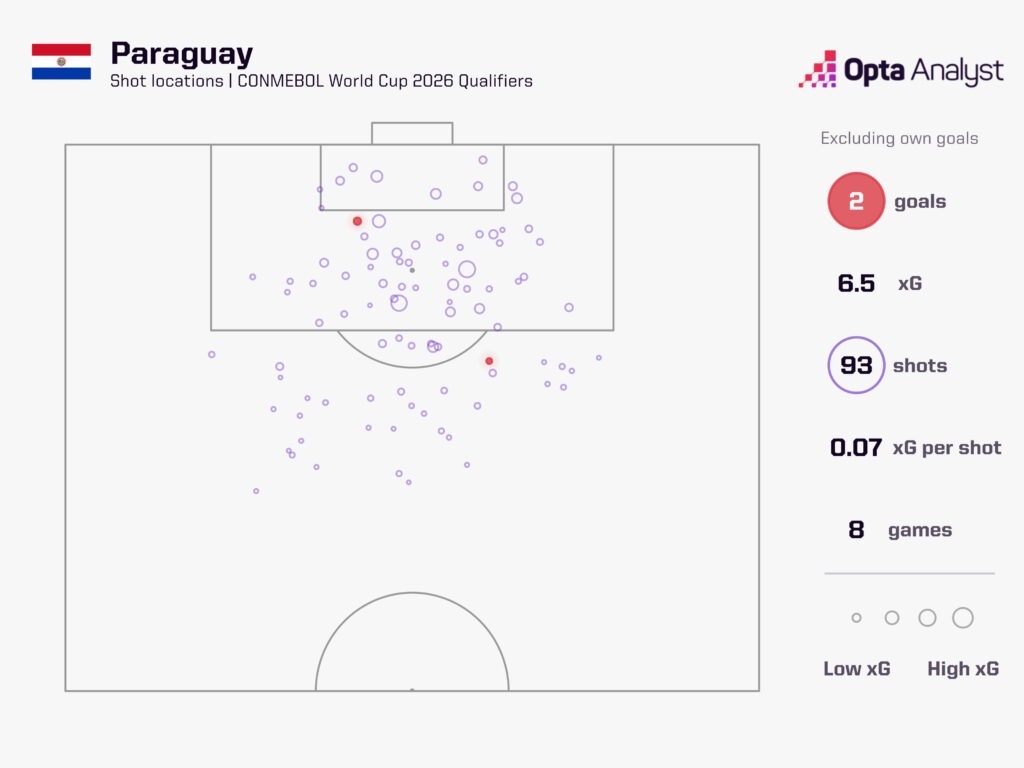
Winless and Goalless: Peru’s Uphill Battle in the Road to 2026
Peru’s quest to qualify for the 2022 World Cup had a dramatic finish. After winning four of their final six matches to seal fifth place in the South American qualifying table, they earned the right to play Australia in a play-off for a place in Qatar. Unfortunately for them, they were eliminated following a penalty shootout.
That elimination ended Ricardo Gareca’s reign as head coach of the national team, ending the longest managerial spell in charge of Peru, which began in 2015. Since the departure of the Argentine coach, Juan Reynoso took over, only to be dismissed following a winless six-game start to this qualification campaign (D2 L4).
Jorge Fossatti then arrived, but Peru went through the 2024 Copa América without a single goal scored for the first time ever. Fossatti, and those problems, remain, and Peru are the only nation yet to win in the CONMEBOL World Cup qualification campaign for the 2024 World Cup.
The majority of Peru’s problems have been in attack. Attempting just 53 shots in eight games – the fewest of the 10 nations in qualifying – is bad enough, but to convert just 3.8% of those into goals is even worse. A major issue is the lack of replacement for Paolo Guerrero.
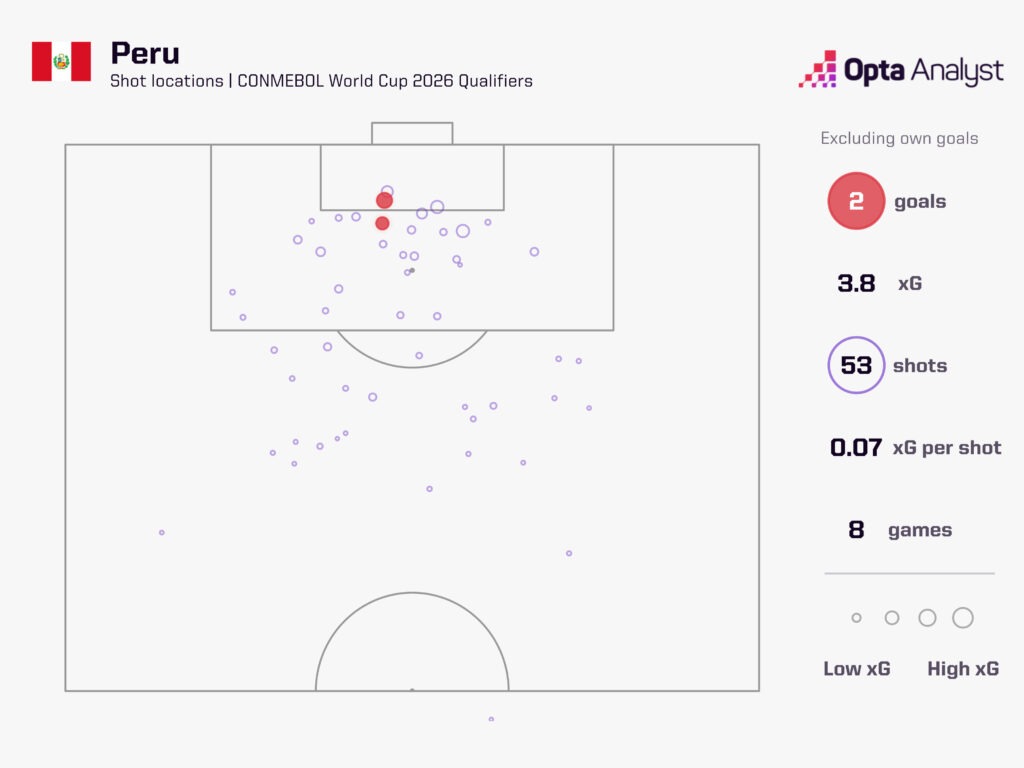
Their all-time top scorer with 40 goals is now 40 years old, and didn’t make the cut for their squad for these two qualifiers in October. He returned to his home country and had good numbers in the Peruvian league, tallying four goals and two assists in 10 games. However, injuries and a troubling issue that saw his mother kidnapped left him out of action between April through September domestically.
Guerrero played in the 2024 Copa América, but it remains to be seen if he’ll have another chance to save Peru before his impending retirement.
Uruguay’s Bright Future Under Bielsa Faces Internal Strife
At first glance, Marcelo Bielsa’s renowned tactical philosophy seems perfectly suited to this young crop of Uruguayan players that includes Federico Valverde, Facundo Pellistri, Manuel Ugarte and Darwin Núñez, who combine tireless energy with solid technical skills.
They began their World Cup qualifying campaign well, including a notable 2-0 away win against Argentina, and with nearly half of the competition played, Uruguay comfortably sit in third place, far away from the heroic yet stressful last-minute qualifications they’ve had to rely on in recent campaigns.
Uruguay lead the rankings for goals scored (13), have the most high turnovers of possession (66) and boast the second-lowest PPDA (9.8, just behind Argentina’s 9.3) – all trademarks of a Bielsa side.
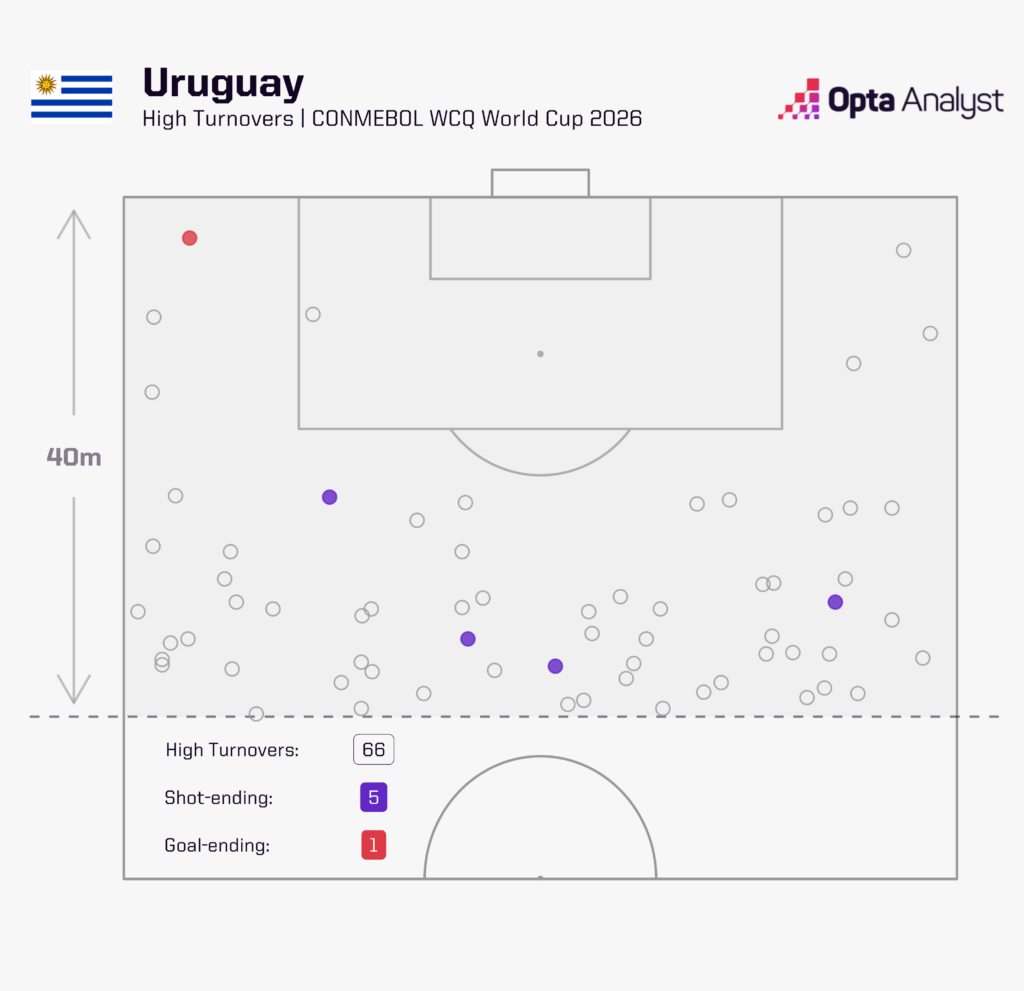
However, questions began to arise after the 2024 Copa América, where Uruguay knocked out Brazil but lost in the semi-finals to Colombia in a tightly contested match that saw disturbances in the stands, scuffles between Uruguayan players and the police, and heated statements from Bielsa himself.
It seemed like the controversy would end there, especially after Uruguay won the third-place match, providing a fitting send-off for their all-time top scorer, Luis Suárez, who scored in the final game.
However, in the past week, the former Liverpool striker publicly aired some grievances regarding Bielsa’s management. His teammate Agustín Canobbio elaborated on these issues, and although Valverde, the team’s star, did not go into detail, he also didn’t deny the existence of internal problems.
Uruguay will now have to prove their mettle away against a struggling Peru side and then a meeting with the always-challenging Ecuador. These upcoming matches will reveal whether the team can rise above their internal turbulence or if these issues will ultimately expose vulnerabilities in their qualifying campaign.
Venezuela’s World Cup Dream Alive: Unbeaten at Home and Hungry for More
Having earned 10 points in eight matches (W2 D4 L2), Venezuela are off to their second best start ever to a World Cup qualifying campaign (equalling 2006 and one point behind their 2014 campaign). Now, with more South American slots allocated to the 2026 edition, the Vino Tinto have high hopes of participating in their first ever World Cup.
However, the Venezuelans will need to bounce back in this next double-header against Argentina and Paraguay, having gone without a goal across the last international break. They lost 4-0 in Bolivia and then drew 0-0 at home to Uruguay despite posting their highest tallies across this qualification campaign for both shots (20) and shots on target (6) against the Uruguayans.
Venezuela are not only unbeaten at home (W2 D2) so far in the 2026 qualfiiers, but have also kept a clean sheet in every match, recording four straight home clean sheets within World Cup qualification for the first time in their history.
At 35 years of age, former Premier League striker and all-time national team top scorer Salomón Rondón leads his team in goals in the 2026 qualifiers (2). His form can also be noted at club level, with 11 goals for Pachuca in just 1,061 minutes during this 2024-25 season.
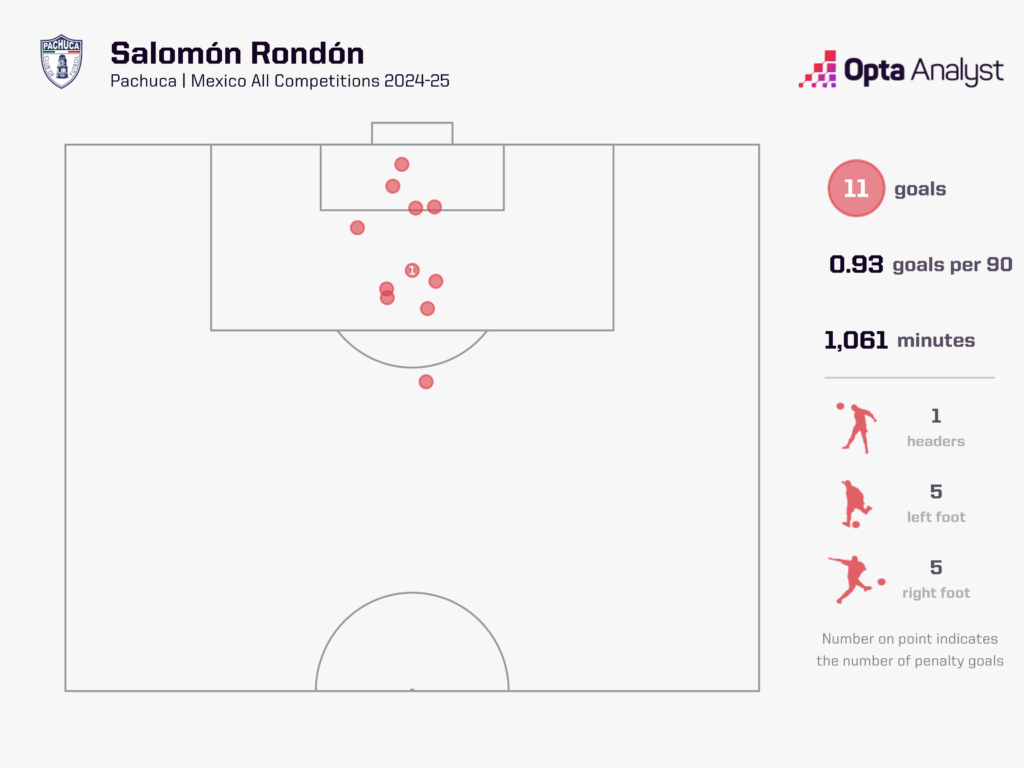
Enjoy this? Subscribe to our football newsletter to receive exclusive weekly content. You should also follow our social accounts over on X, Instagram, TikTok and Facebook.
